Manually managing employee competencies might seem sufficient at first, but as your organisation scales, this approach quickly becomes inadequate.
Manual entries are often fraught with errors, inconsistencies, and difficulties in trend analysis, making it nearly impossible to effectively track and develop talent.
As a result, organisations risk falling behind in an increasingly competitive landscape.
That’s why you need a Competency Management Software.
It automates processes, ensures consistency, and provides real-time insights.
What Is the Competency Management System?
A Competency Management System is a type of software or digital tool that helps companies manage and improve the competencies – skills, knowledge, and behaviours – of their workers.
Here’s how it works:
- Identify: The system helps find out what skills employees have and what they need.
- Assess: It checks how good employees are at different skills.
- Track: It keeps track of each employee’s skills over time.
- Develop: It helps employees learn and grow in their jobs.
The main goal is to make sure employees have the right skills for both now and the future. A competency management software also connects these skills with the company’s goals, making sure everyone is working towards the same objectives.
Top Features of Competency Management Software
Here are some common features of competency management software:
1. Competency Framework
A competency management system provides a competency framework, which outlines the skills and behaviours needed across the organisation. It also helps create specific competency models for each role, showing the exact competencies needed to be successful in those positions.
This includes both technical skills (like using software) and soft skills (like communication). Additionally, it maps these competencies to specific individuals, ensuring that employee skills match job requirements and support organisational goals.
2. Competency Assessment
Competency management system helps assess the current competencies of employees. This can be done through:
- Manager evaluations
- Self-assessments
- Automated tests
- Peer reviews
It helps find out what employees are good at and what they need to improve.
3. Skill Gap Analysis
By comparing the skills employees have with the skills they need for their current jobs or future positions, the system helps identify skill gaps. Knowing these gaps is important for planning training and development.
4. Learning and Development Plans
To address the competency gaps, many competency management systems work with Learning Management Systems (LMS) or other training tools. This makes it easy to assign training programs to help employees improve specific skills.
A dominant trend in this area is personalised learning experiences, driven by AI that tailor training programs to individual employee needs. “These personalised learning paths improve engagement, retention, and overall skill development,” according to a report on Competency Management Software Market by Infinity Business Insights.
5. Performance Management
Competency management system often integrates with performance management tools, linking competencies to:
- Performance appraisals
- Succession planning
- Promotions
This makes sure that employees’ growth is aligned with the company’s goals and their future within the company.
6. Real-Time Reporting and Analytics
The system provides reports and dashboards that show the competency levels across the company. It tracks progress over time, spots trends, and makes sure the workforce is meeting its strategic objectives.
7. Succession Planning
It helps plan for the future by finding employees with the skills needed for leadership roles and making sure they get the right development opportunities.
Benefits of Competency Management Software
Using competency management software has many benefits for your company.
It makes sure that employees’ competencies match the company’s long-term goals, helping the business do better. By linking the company’s goals with employees’ skills, you can see how employees can help the company succeed.
This also helps HR give employees job descriptions based on their skills. These job descriptions show employees exactly what is expected of them and how they fit into the company. This keeps employees engaged and gives them clear paths for growth, which helps with employee satisfaction and retention.
HR can also make better decisions for hiring and promotions. Knowing the exact skills needed for each job makes it easier to fill positions when someone gets promoted, moves to another job, or leaves the company.
The tools often have a searchable database that helps HR and managers find the employees with the right competencies. This makes it easier to assign tasks and move employees around.
Lastly, the software automates and simplifies the process of tracking and managing skills, reducing mistakes and saving time compared to using manual systems like spreadsheets.
15 Best Competency Management Software
Here are different competency management software options for various business needs and goals. Whether you’re in a specific industry, have a set budget, or unique requirements, you’ll find solutions with different features and pricing.
1. Peoplebox
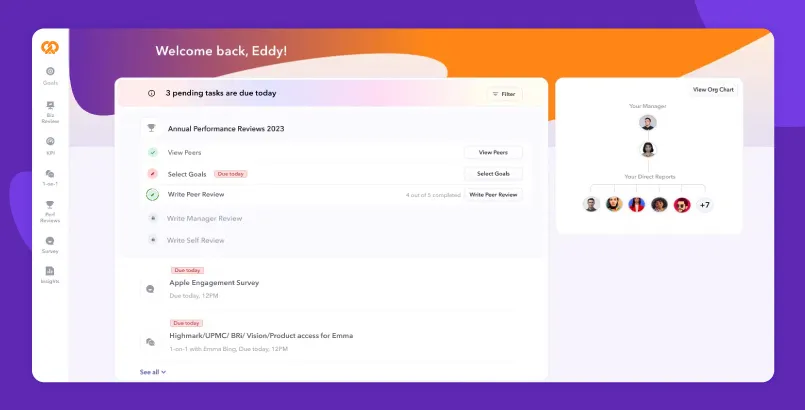
G2 rating: 4.2/5 (300 reviews)
Peoplebox provides a structured approach to identifying and developing key competencies. It is a comprehensive platform that combines OKR (Objectives and Key Results), performance management, and employee engagement.
With Peoplebox, managers can give feedback on both goals and competencies, providing a holistic view of an employee’s performance. It standardises and ensures consistency in competency assessments across different managers, teams, or departments within an organisation.
Key features: Custom weightage for competencies, goal-based 360 reviews, automated tracking of goals and projects, advanced formula for final rating calculation, calibration, 9-box, real-time updates, integration with Slack/Teams
Price: Starting at $7/month/person (only annual billing)
2. TalentGuard
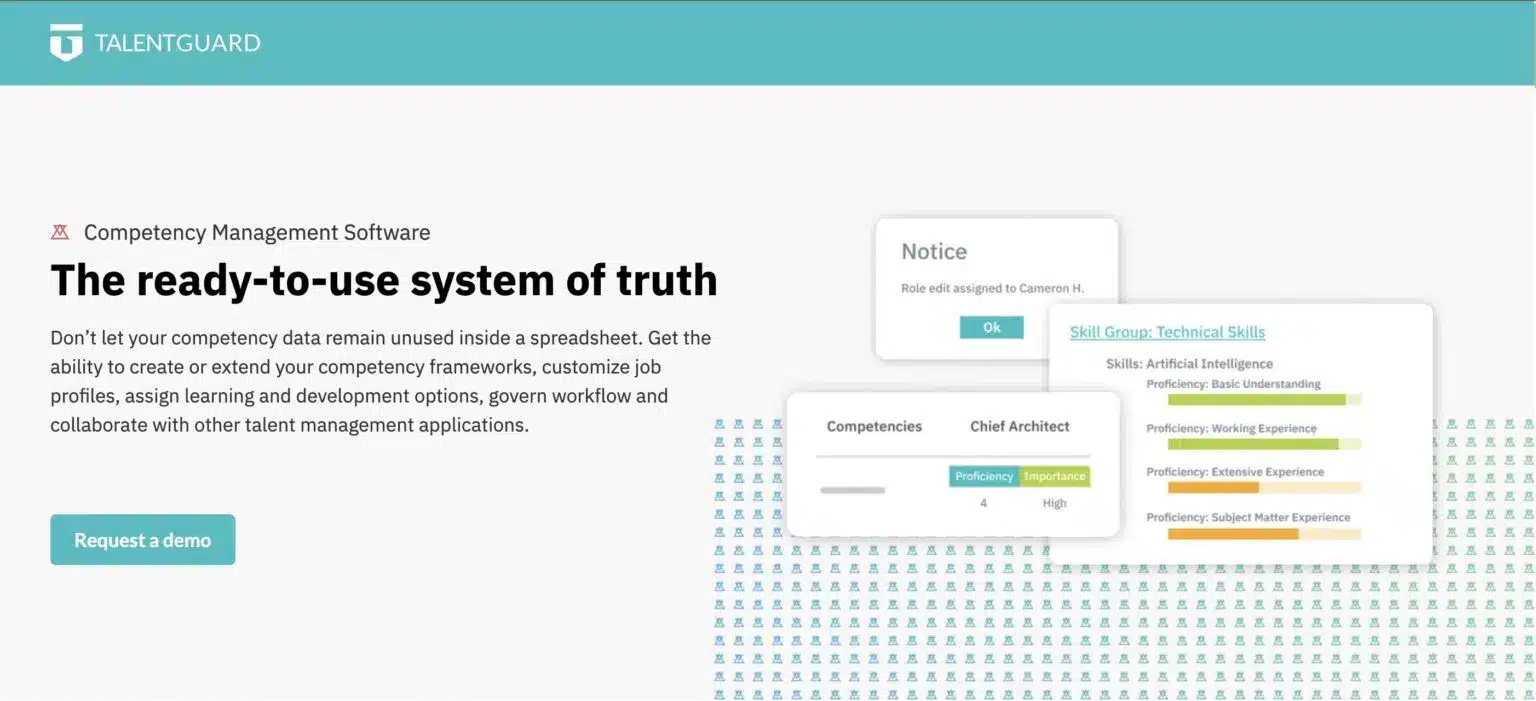
TalentGuard helps you use your skills and competency data in a better way than just keeping it in a spreadsheet. It lets you create and change your skill frameworks, customise job roles, choose learning and development options, manage workflow, and work with other talent management tools.
Key features: Create skill and competency profiles, develop job descriptions, map learning to skills and competencies, map career path progressions, create a skills inventory, conduct gap analysis, assess employee skills and competencies, curate personalised employee learning paths, recommend employee career paths, track career goals, build talent pools, measure employee performance, track employee certifications, conduct multi-rater leadership feedback
Price: Flexible pricing. Available upon request
3. Cornerstone Performance

Cornerstone Performance helps connect employee goals with the company’s goals. It aligns everyone to a shared purpose so they can achieve more together using a tool that keeps track of performance all the time.
Key features: Automate performance reviews, skills graph and capabilities, goal alignment, succession management, total compensation, observation checklist, feedback and check-ins, development plans, foundational job descriptions, pulse engagement surveys, data and dashboards
Price: Available upon request
4. Avilar
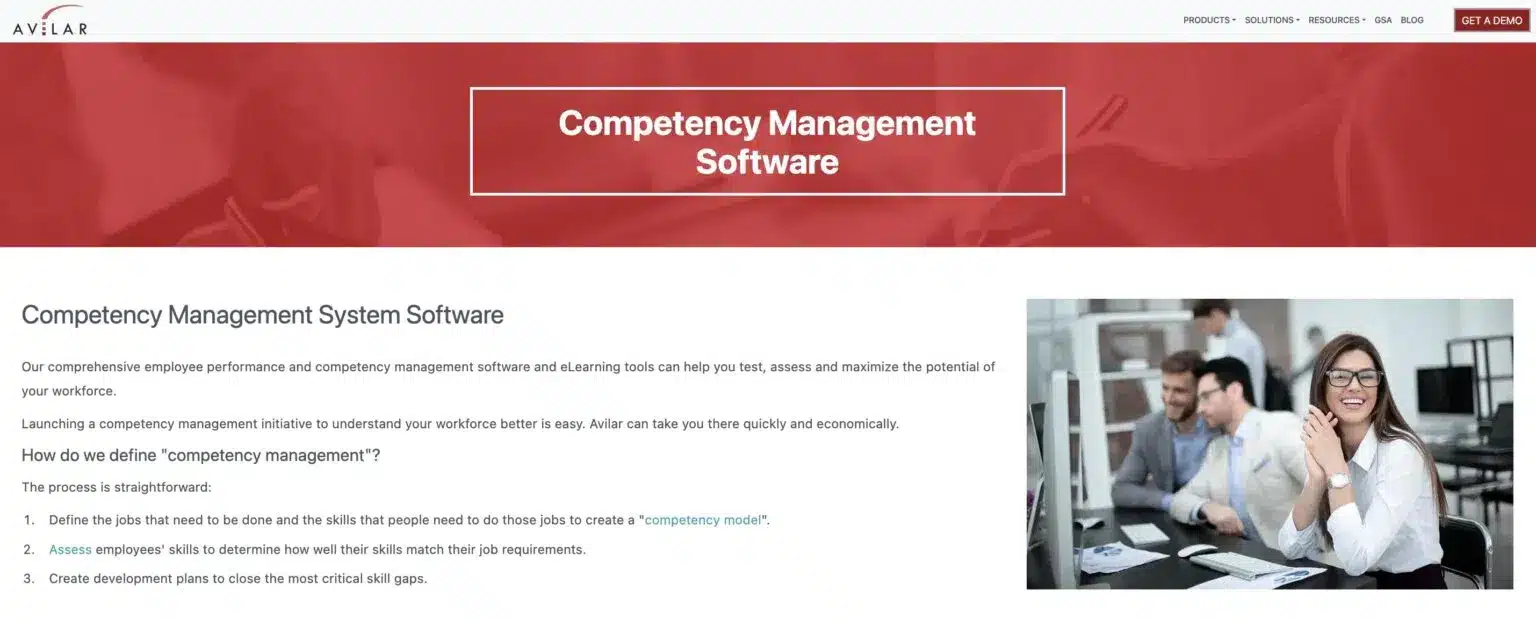
Avilar is a tool that helps manage employee competencies and performance. It makes it easy to see what jobs need to be done and what competencies are needed for those jobs.
You can use Avilar to test and assess your employees’ competencies, and then make plans to help them improve where they need to.
Key features: Identify skills gaps, align training with corporate goals, perform rapid skills inventories, plan for retirement and succession, perform assessments including performance reviews
Price: Available upon request
5. Kahuna
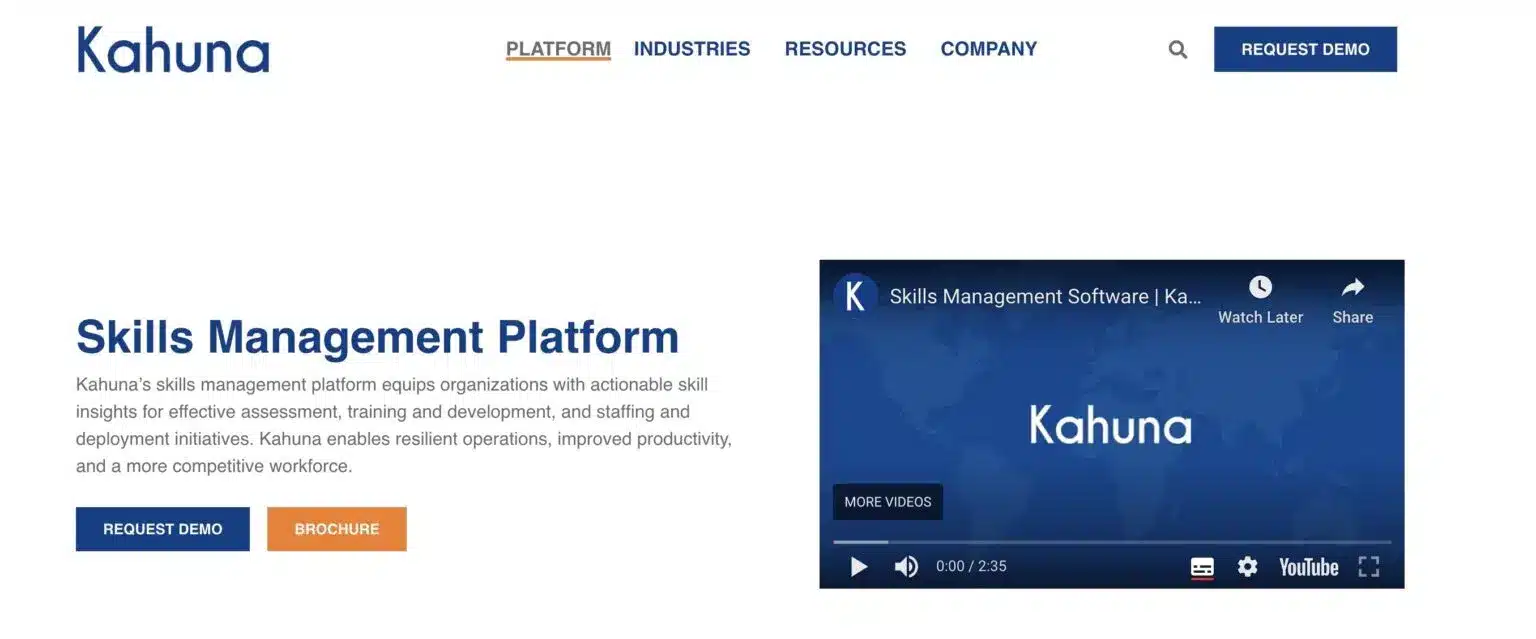
Kahuna is a skills management tool that helps you understand and improve your employees’ skills. It gives insights to assess skills, train employees, and assign roles based on skill alignment.
Key features: Integrates with your existing technology, continuous data collection, team matrix, employee dashboard, map training requirements to skill development, assessment form, assignment workbench, talent finder, capability planning, multiple methods of assessment: observational checklists, quiz, on-the-job, experiential, learning inference
Price: Available upon request
6. iMocha
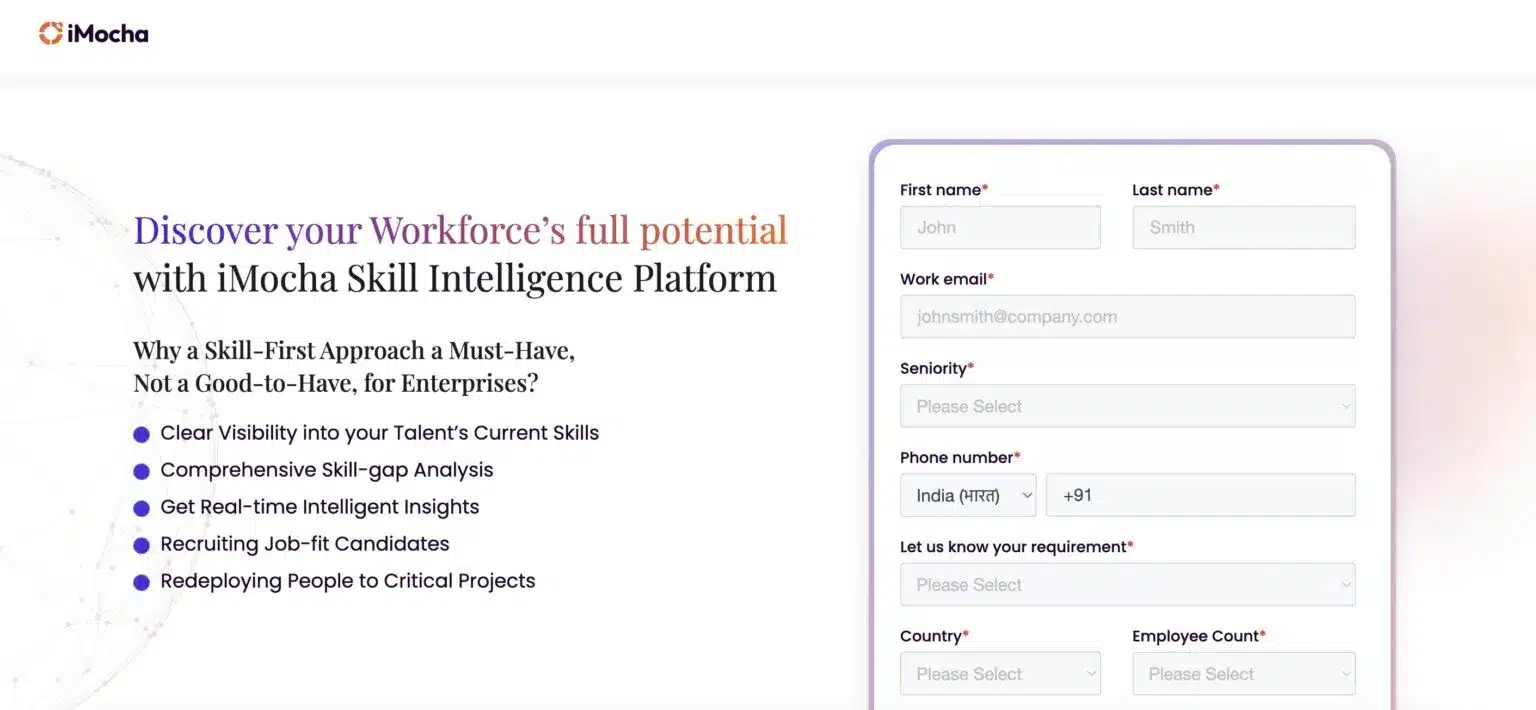
iMocha helps companies see the full potential of their workforce by focusing on skills. It gives clear visibility into what skills employees have and what skills they need.
With iMocha, you can see where there are skill gaps, get real-time insights, and make smart decisions. This helps in hiring the right people for jobs and moving employees to important projects when needed.
Key features: Key features: skills-first approach, world-class taxonomy, multi-channel validation, largest skills assessment library, AI-powered technology, HCM integration, qualitative insights, analytics
Price: Available upon request
7. Cognology
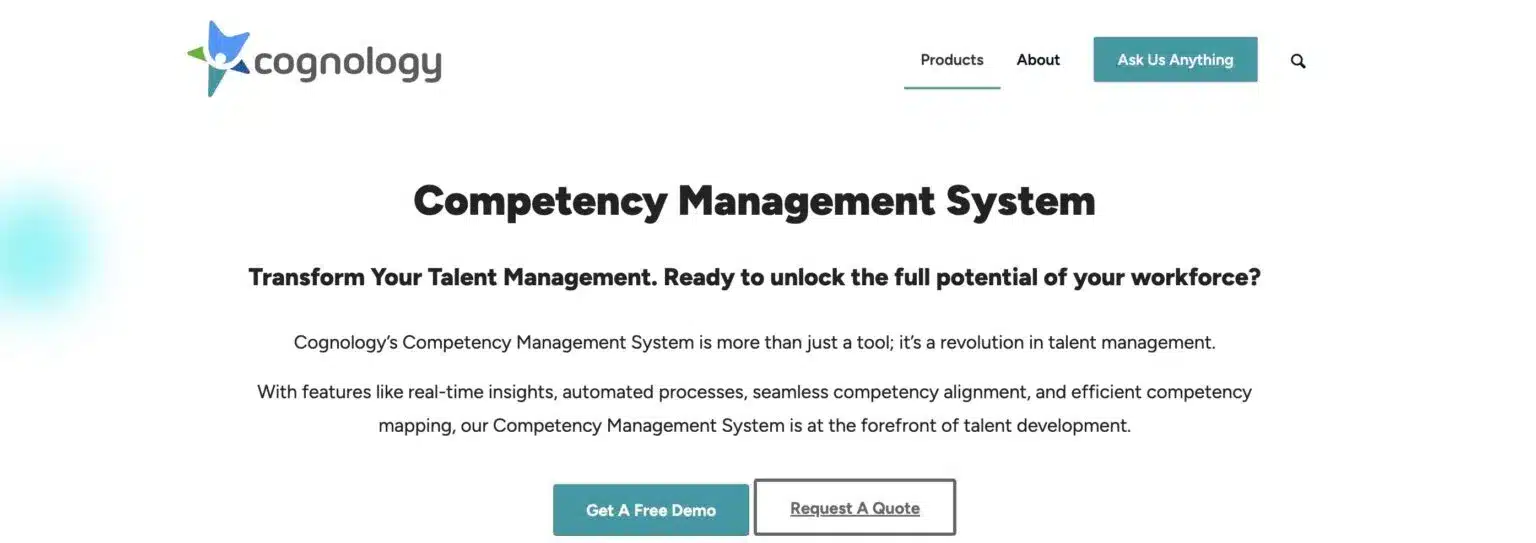
Cognology’s Competency Management System helps companies make the most of their employees’ skills. It’s more than just a tool—it’s a way to improve how you manage talent.
With features like real-time insights, automated processes, and easy ways to match skills to the right jobs, Cognology helps you grow and develop your team’s talents.
Key features: Customisable frameworks, integration, competency mapping, self-service for employees, link competencies to career progression, data-driven decision making, continuous feedback, competency assessment, development for competency gaps, competency matrix reports
Price: Starting at $5 per person per month
8. SC Training (formerly EdApp)
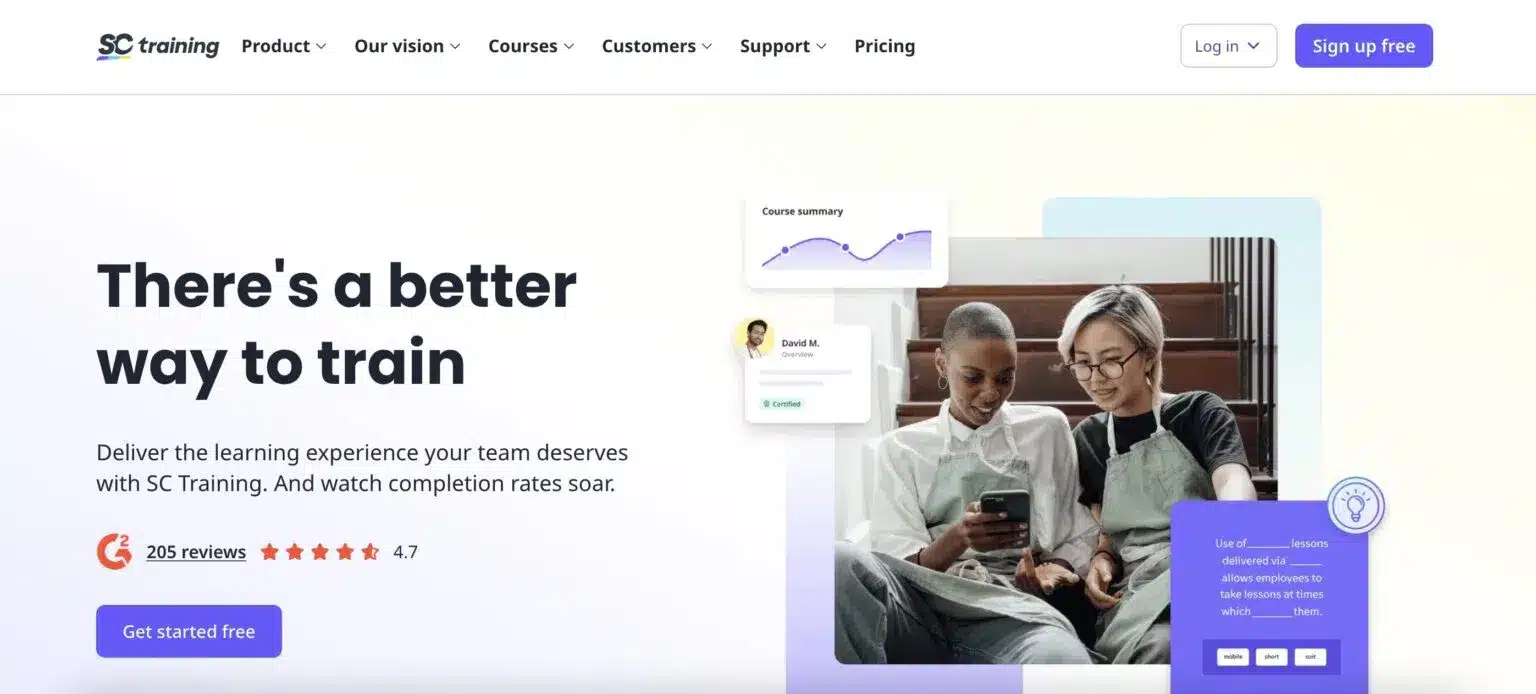
SC Training makes learning better for your team. With SC Training, more people finish their courses, helping everyone learn and improve.
SC Training is designed for a wide range of sectors, including businesses, NGOs, and community organisations. It supports specialised training in areas such as human rights, humanitarian affairs, safety compliance, and food safety.
Key features: Onboard new team members, train with digital courses, assess knowledge on the job, track performance, certify your team, ready-made courses, create a course in minutes using AI, enhance learning with video, quizzes, games, and assessments, manage access and editing of learning content, engagement features, integrations
Price: Free for up to 10 learners. For larger teams, starting at $5 per learner per month, billed annually.
9. SAP SuccessFactors
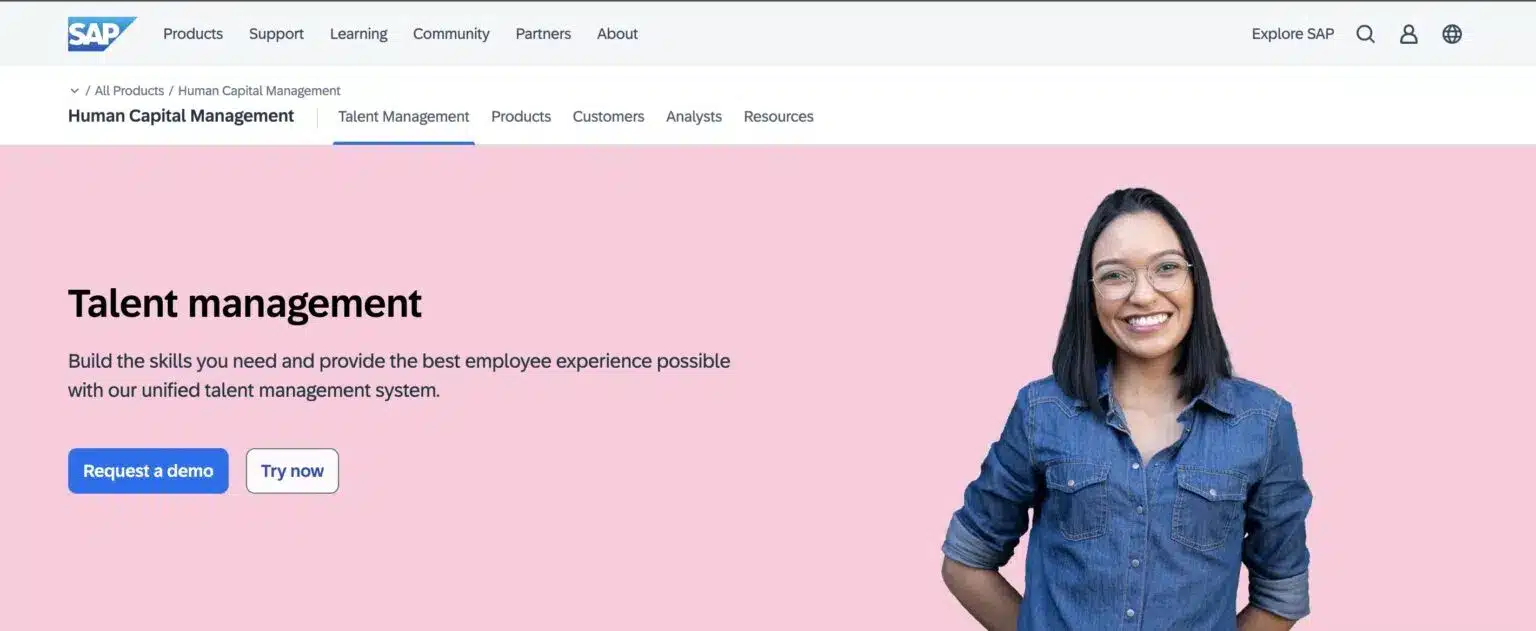
SAP SuccessFactors is a complete talent management system that helps companies build the skills they need and give employees a great experience at work.
Key features: AI-powered talent intelligence, competency alignment, continuous performance management, customised career development, real-time insights into workforce capabilities, visibility into employee skills and abilities, regular feedback and performance evaluations, skills-driven development, mobility and career growth opportunities
Price: Available upon request
10. Oracle HCM Cloud

Oracle Talent Management helps companies manage competencies along with every other stage of the talent lifecycle. You can handle everything from finding and hiring new employees to managing their performance, developing their skills, planning careers, and preparing for future leaders—all in one system.
Key features: AI-driven skills engine, skills-driven talent management, identify skills gaps, supports reskilling and upskilling, centralised place to review, assign, and manage skill development
Price: $7 per user per month, with a minimum of 500 users. Standard term length is three years.
11. Workday
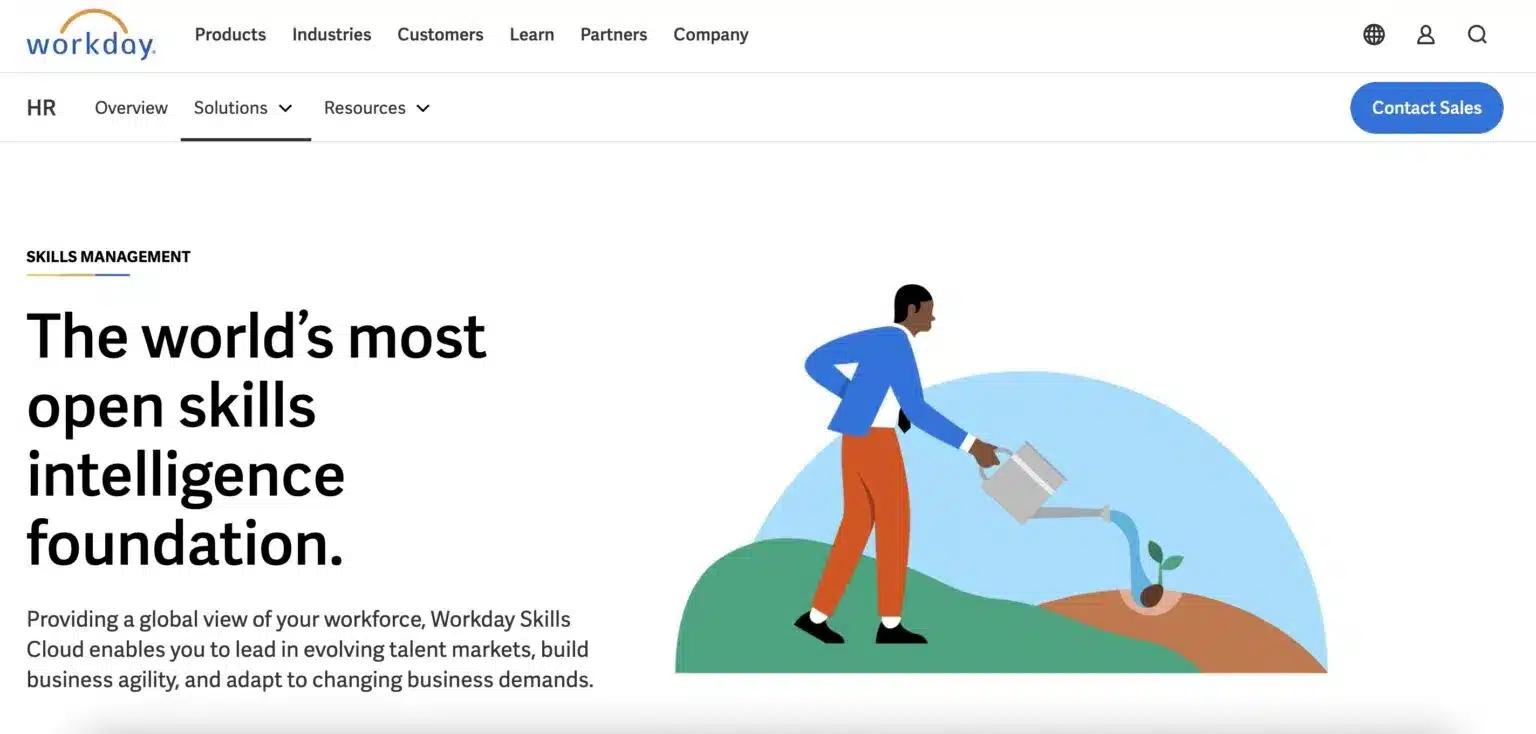
Workday Skills Cloud helps companies see the skills of their employees all around the world. It gives a clear view of your workforce so you can stay ahead in changing job markets, make your business more flexible, and quickly respond to new challenges.
Key features: Integrate data from multiple systems, identify and track skills trends, skills-based talent strategy, understand employees’ career goals, align talent with business needs
Price: Available upon request
12. Mintra
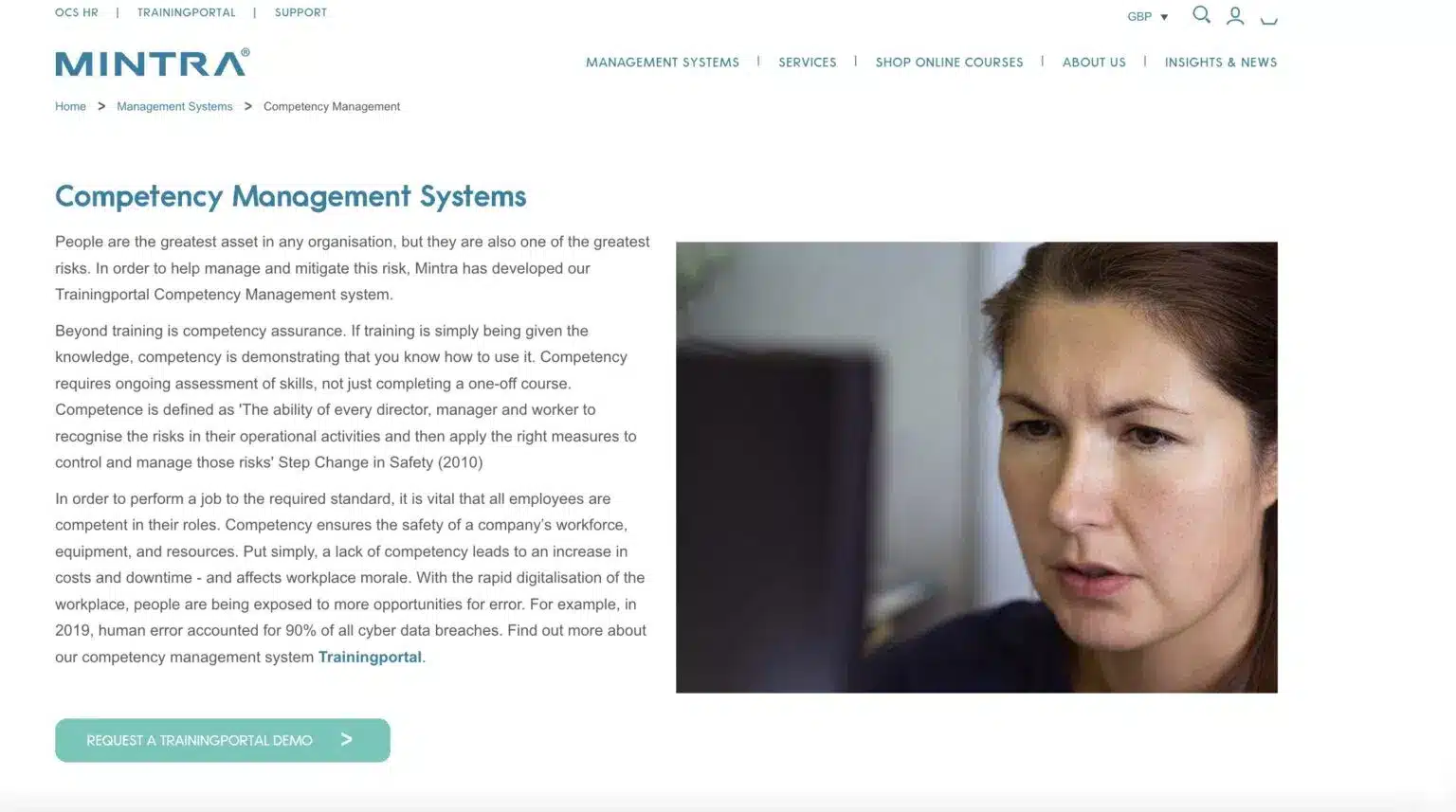
Mintra’s Trainingportal Competency Management system helps companies keep their employees safe and skilled. It goes beyond just giving training by making sure employees know how to use what they learn.
Mintra Trainingportal is designed specifically for safety-critical industries. These industries require a high level of competency to prevent large-scale incidents that could have serious consequences. By focusing on competencies, Mintra helps reduce risks and keeps the workplace safe and effective.
Key features: Continuous review and evaluation of employees, central overview for managers to analyse workforce competencies, identification of skill gaps, digital learning library, skills development
Price: Available upon request
13. Nestor
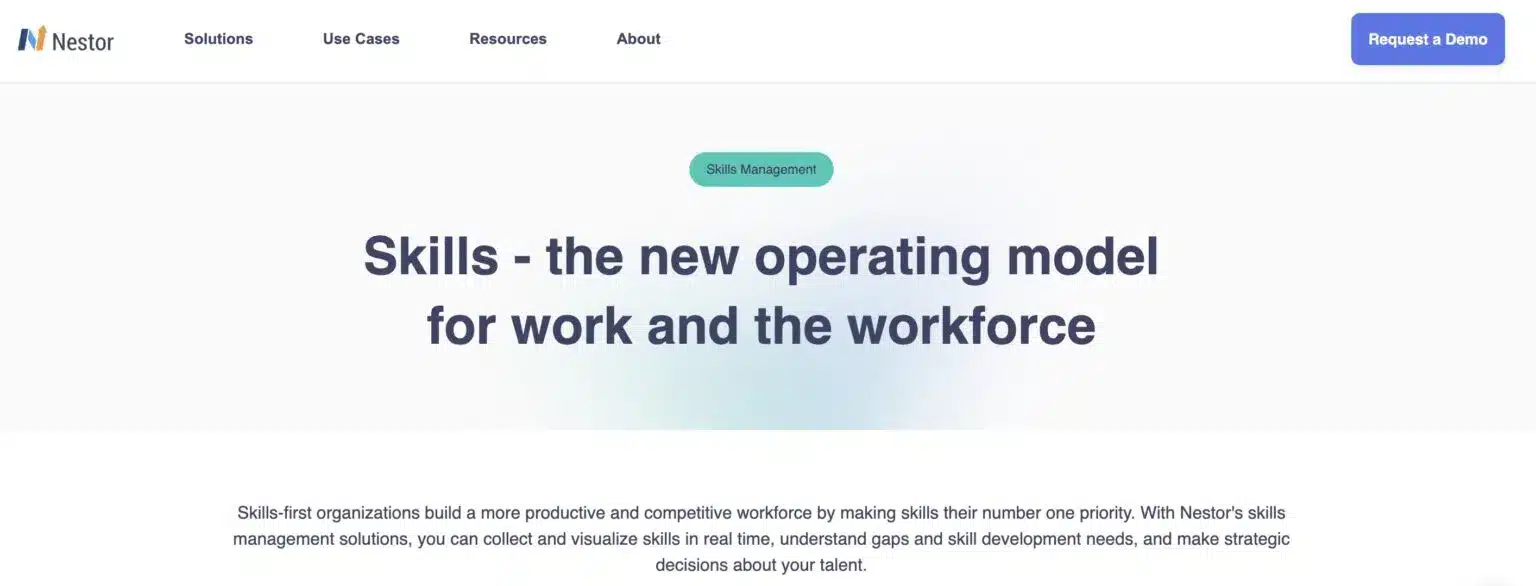
Nestor helps companies build a better and more competitive team by making skills their number one priority. With Nestor’s skills management tools, you can see what skills your employees have in real time, find out where there are skill gaps, and decide how to best use your workforce.
Key features: Skill gaps and performance trends, job role skills visibility, comprehensive skills framework, dynamic skills taxonomy, skills assessments, personalised upskilling and reskilling
Price: Available upon request
14. SkillsDB
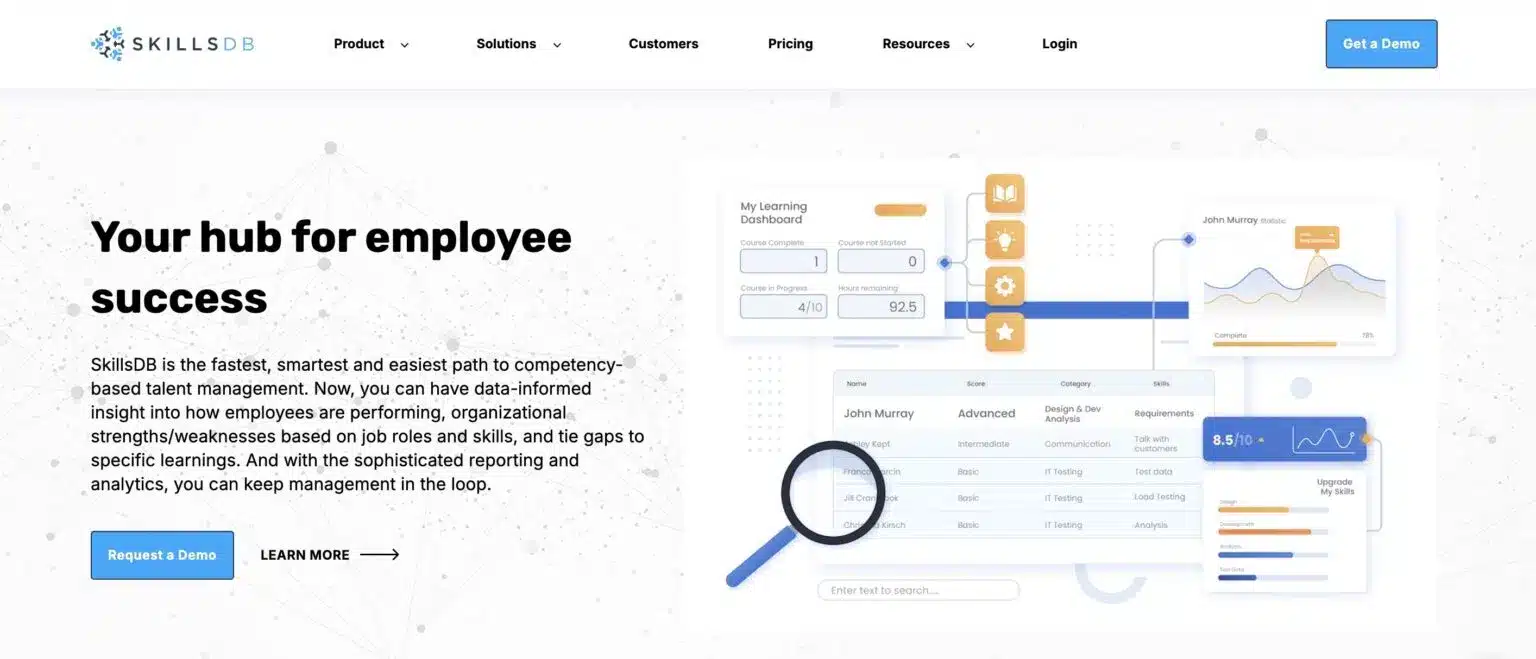
SkillsDB helps companies manage their employees’ skills and success. It gives you quick and easy insights into how well employees are doing, the strengths and weaknesses of the whole company based on job roles and skills, and ties gaps to specific learnings.
Key features: Skills tracking across the entire organisation, skills matrix, gap analyses, competency levels, career development, succession planning, Individual Development Plans (IDPs), qualifications and certifications
Price:
- Starting at a flat fee of $100 per month for up to 50 users.
- Or $7 per employee per month, for up to 500 employees.
- Available upon request for 500+ employees.
15. HRSG CompetencyCore
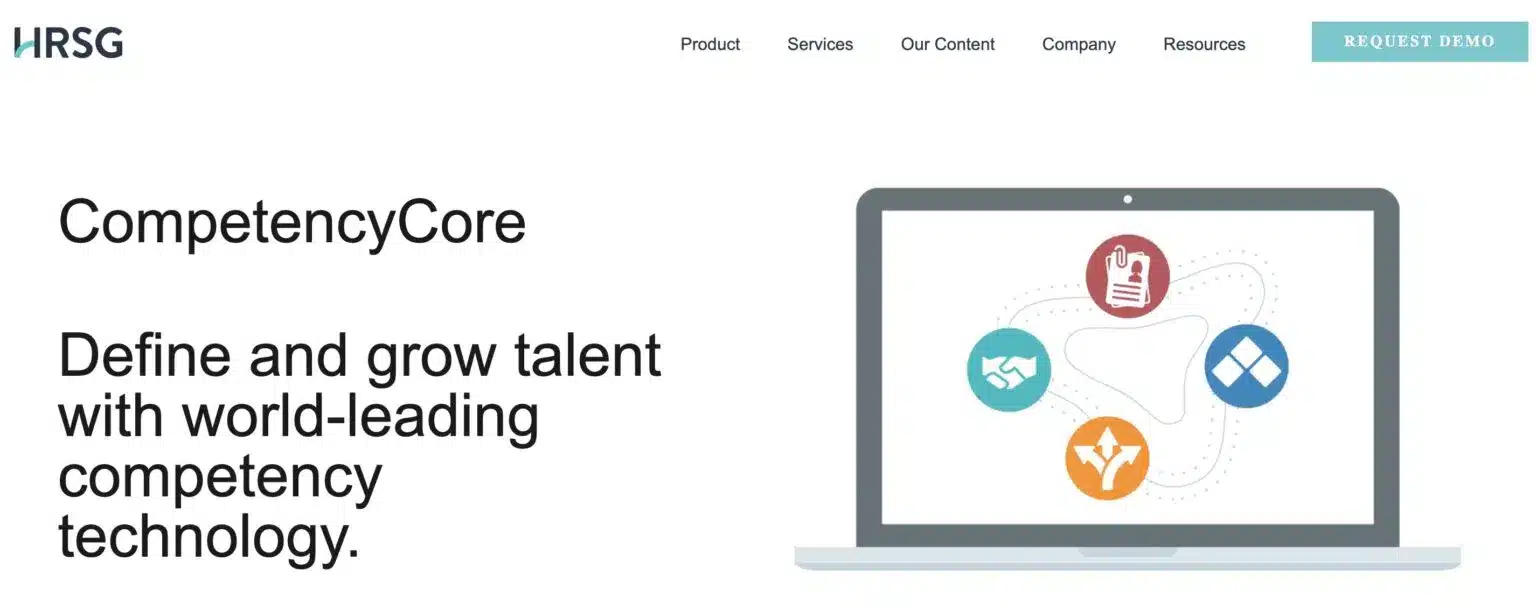
CompetencyCore helps companies find and grow talent using the latest technology. It uses AI to define the skills needed for jobs and helps with hiring, assessing, training, and career pathing.
Key features: Competency-based recruitment, competency mapping, competency implementation, tailored employee development plans, career path navigation, competency-based assessment, 5000+ development activities, visual career path tools, integration with HR programs, large content libraries for job descriptions and competencies
Price: Available upon request.
How to Choose the Right Software for Your Business
Choosing the right competency management software for a business requires a strategic approach. Now that you have the top 15 picks, here is a step-by-step process to help you decide how to choose the best one for your organisation.
1. Understand Your Business Needs
Evaluate your current competency management practices. Identify what’s working, what’s not, and what needs improvement.
Engage HR and department heads to understand their primary goals.
Are you looking to:
- Improve performance appraisals
- Streamline talent development
- Support succession planning
- Enhance training
2. Establish Clear Requirements
Based on the business needs above, list the functional features you need. This might include:
- Competency mapping
- Gap analysis
- Training management
- Performance tracking
- Reporting capabilities
3. Evaluate Software Options
Start with market research to shortlist potential vendors that offer the features you identified in the above step.
Check or ask questions about these things:
- Ease of Use
Request demos to see the software in action. Whenever possible, opt for trial versions to get hands-on experience.
The simpler the software, the quicker the adoption. User-friendly interfaces are a must to minimise resistance and ensure smooth implementation.
- Integration
The software must integrate smoothly with your existing HR and IT systems. Evaluate the ease of data migration from your current systems to the new software.
- Customisation
Make sure the software can be tailored to fit your specific competency frameworks and business processes.
- Security and Compliance
The software should help your organisation remain compliant with relevant laws and regulations regarding employee data management. Ensure the software complies with industry standards for data security and privacy (e.g., GDPR, CCPA).
- User Training and Adoption
Check if the vendor offers comprehensive training programs to help your team get up to speed with the new system.
- Scalability
Ensure the software can scale easily as your organisation grows. It should handle more users without breaking down.
While adding more employees will increase costs, look for pricing models that offer reasonable per-user fees or volume discounts.
- Industry Expertise
Choose vendors who understand your industry’s unique challenges and requirements. Do they have past clients in the same industry as yours?
- Vendor Credibility
Look into the vendor’s market reputation via:
- Customer testimonials
- Case studies
- Online reviews
- Customer Support
Evaluate the quality of customer support:
- Is there a dedicated support team?
- What are their response times?
- Costs and ROI
Determine the total cost of ownership. Ask yourself if the value it provides justify the cost.
Based on your evaluation, choose the software that best meets your needs, budget, and strategic goals.
Conclusion
In conclusion, choosing the right competency management software is important for helping your employees build skills and reach your business goals. The top 15 software options offer different features to fit your needs.
If you want to connect competencies with goals and performance, Peoplebox is a great choice.







